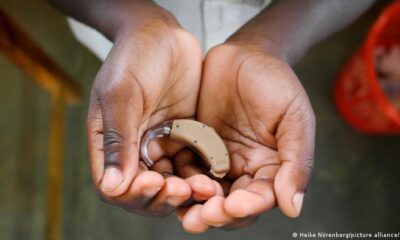SEVEN children have now died following an outbreak of Strep A, health authorities have said.
Medics have urged parents to be on the lookout for signs of the illness following the deaths.

The UK Health Security Agency (UKHSA) said on Friday that five children in England have died from the infection.
One child has also died in Cardiff, Wales, with another fatality also having been reported over the weekend.
In most cases it will cause mild illness, and can lead to conditions such as scarlet fever, which is flu-like and tends to occur in children – it can be serious if not treated swiftly with antibiotics.
Data from the UKHSA shows that there were 851 cases of scarlet fever in the week ending November 20.
This is compared to 186 cases recorded in previous years.
Figures show that during the last high season for Strep A in 2017/18, there were four deaths in children under the age of 10.
Scarlet fever is caused by bacteria called group A streptococci. These bacteria also cause other respiratory and skin infections such as Strep throat and impetigo.
With a resurgence in illnesses caused by the infection it’s important to know what to look out for.
There are four key signs of Group Strep A to watch out for, according to the NHS. These are:
- A fever (meaning a high temperature above 38°C)
- Severe muscle aches
- Localised muscle tenderness
- Redness at the site of a wound
Speaking on Good Morning Britain today, Dr Amir Khan added that a sore throat is also a common symptom.
He added: “It’s very difficult to tell the difference between that kind of infection of a cold or flu.
“But often the runny nose is absent with Strep so you don’t have that kind of congestion,” he said.
The NHS says that when it comes to scarlet fever, your child will most likely start off with cold-like symptoms.
The signs will include:
- high temperature
- sore throat
- swollen neck glands
- rash 12-48 hours after initial symptoms. This usually starts on the tummy and then spreads
- white coating on the tongue
- red cheeks
Speaking on Radio 4’s Today programme, Dr Susan Hopkins, of the UKHSA, said GPs and parents should be on the lookout for a sore throat which doesn’t ease with painkillers.
“If painkillers don’t work to reduce pain or bring down a high fever then that’s a concern,” the expert explained.
“Secondly, if a child has a pink rash which feels like sand paper then that’s also concerning,” she added.
She urged parents who believe their child could have the bacterial bug to look at their child’s tongue.
“In [cases of] scarlet fever we often see strawberry tongue, where there is a bit of a white coating on the tongue which is a bit red,” she explained.
“We also get concerned when children are more sleepy, their hands and feet are blue, they’re not eating and are dehydrated.”
Dr Susan said parents should contact NHS 111 or their GP if their child displays any of these symptoms.

Must See
-


Tips
/ 10 months agoTen reasons for Amsterdam
Amsterdam mainly celebrates April 27th in Orange. The king’s birthday is traditionally celebrated with a...
-


Tips
/ 11 months agoTen travel tips for South Korea
A country between high-tech and tradition. A visit to East Asian South Korea is worthwhile...
-


Tips
/ 11 months agoTen reasons for Mecklenburg-West Pomerania
No other federal state has as much water as Mecklenburg-Western Pomerania. Baltic Sea waves wash...













